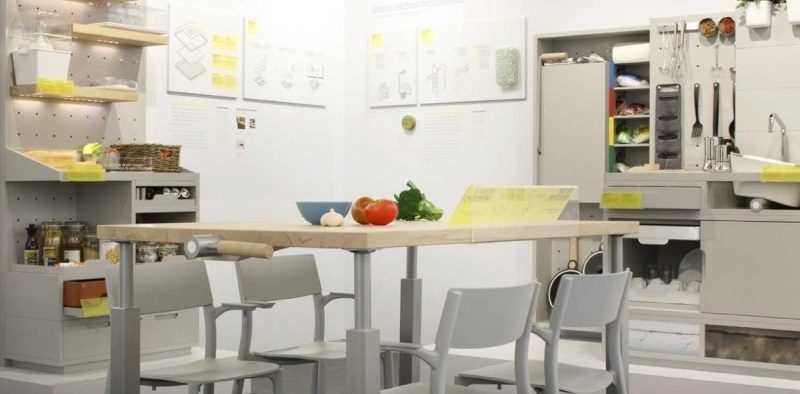See what your kitchen will look like in 2025
Share


It will make us become mindful of water usage
How will we move around food in 2025 is the question foremost UK household furniture giant, IKEA seeks to answer as it unveiled its The Concept Kitchen 2025, a pop-up exhibit at EXPO Milano 2015 in Milan, Italy. IKEA did not just envision the kitchen of the future, it actually built it.
The kitchen developed with IDEO London, a global design firm, and college students in conjunction with IKEA focused on the social, technological, and demographic forces that will impact how we behave around food in 2025.
The exhibition which is just one part of an ongoing investigation by IKEA into how people’s relationship to food is changing is an outcome of the 18 month long collaboration with IDEO London.
The Concept Kitchen 2025 isn’t about your kitchen and its appliances doing all the work for you. It is about helping you make thoughtful decisions about food and waste. It reveals what we may do in 2025 with food. It depicts how we will be growing our food, storing it; how we will be cooking, eating, living and working in the kitchen.
The 2025 Kitchen will do the following according to IKEA:
- If you are not sure what to do with a tomato that is about to go bad, place it on IKEA’s Table for Living to get a quick and easy recipe. The essence is to reduce food waste.
- All of the recipe information shows up on the table.
- If your apartment is not spacious, the table eliminates the need for a stove. Hidden induction coils heat the inside of pots and pans rather than the surface to make the table amenable to working, cooking, or eating.

All of the recipe information shows up on the table
- The Modern Pantry takes the doors off of your refrigerator to keep your eyes on your food, so you know what you have on hand and won’t overbuy.
• Enable people dispose thoughtfully
• As we become more conscious of the environmental impact of household waste, we’ll recycle and reuse far more. Cities will encourage that too, charging residents for non-recyclable rubbish by the kilogram.
• Organic waste washed from the sink into the composting system is blended, the water extracted, and it’s then compressed into a dry, odourless puck. These pucks can be stacked for pickup by the municipality.
• The waste water doesn’t flush away: it contains nutrients that can be safely used to feed our indoor plants.
• This waste and composting system helps us live more sustainably by making us more aware of what we’re throwing away, and helping our municipalities dispose of that waste more efficiently.
• We will separate non-organic waste by material. The can, bottle, or container is crushed, scanned to identify what it’s made of, and for contamination.

It is about helping you make thoughtful decisions about food and waste
• Waste is then vacuum packed and sealed in a bio-polymer tube. A thermo-printed label records what we’ve disposed of and potential future uses. Depending on how wasteful we’ve been, we receive an energy credit or debit.
• It will make us become mindful of water usage.
• Water’s set to become more precious in the next ten years, so we’ll need to use it more responsibly. A ‘Mindful design’ solution makes us conscious of our everyday decisions, and helps us make better-informed choices about how we use water.
• The kitchen will use the Grey Water System
• Our sink has two plug holes: pivot one way for ‘grey’ water that be reused for washing up and watering plants, tipping to the right.
• The Black Water System sends badly contaminated water (black water) through to the sewerage pipes for treatment.













